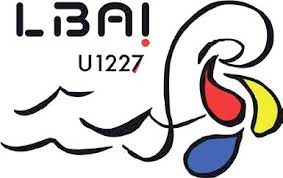This basic research axis is based on the different in vitro models developed in recent years by the members of our Unit, which have allowed us to characterize specific functional characteristics of B cells, in particular their capacity to control the activation of the immune system (Regulatory B cells – Bregs).
Polarization factors that are expressed in the course of inflammatory responses allow for the sequential programming of immune cells from effector to regulatory ones (Gagliani 2015, PMID: 25924064). Different pro-inflammatory effector B cells have been recently described, expressing IFN-γ and the T-box transcription factor 21 (T-bet) in systemic lupus erythematosus (SLE) patients (Jenks 2018, PMID: 30314758), GM-CSF in multiple sclerosis (Li 2015, PMID: 26491076) or IL-6 in systemic sclerosis (Taher 2018, PMID: 29193892). On the other side, we and others have shown that human transitional type-2 (T2) and type-3 (T3) B cells, but also IL-10 producing PBs, exhibit suppressive functions on T-cell proliferation and Th1 differentiation (Matsumato 2014, PMID: 25484301; Simon 2016, PMID: 26525227; Rojas 2019, PMID: 30612739).
We structured the research projects of this axis in three parallel and complementary work packages (WP) that will allow us to better understand the main determinants of B cell functional orientations using complementary approaches, through :
- the definition of molecular signatures of functional b-cell subsets (WP1)
- the study of the role of calcium signaling (WP2)
- the study of glucose metabolism and glycosylation profiles in B-cell functional orientation. (WP3)
WP1. Molecular signatures of functional B-cell subsets
Lead: Sophie Hillion
To study the molecular attributes linked to the distinct human B-cell functions, and based on data established by the members of the Unit, we have adapted a previously described B- and T-cell co-culture system (Harris 2000, PMID: 11101868) that leads to the generation of Th1 or Th2/Tr1 T cells to define Breg-polarizing conditions. We observed that these polarized culture conditions drive the induction of either IFN-γ-producing Be1 B cells or IL-10-positive B10 cells.
To gain insights into the nature of these in vitro-generated B10 cells, we performed phenotypic and transcriptional analyses. Results of these analyses indicate that these B10 cells display a phenotype defined as CD19+CD138+IgM+CD27lowCD38+BLIMP-1+ and that they are antibody-secreting cells (ASCs) able to produce IgM and IL-10 simultaneously but not IgG. This phenotype suggests that in vitro-generated B10 cells are prone to differentiate toward unswitched PBs with an immune regulatory potential.
WP2. Calcium signaling, B cell functional orientation and modulation
Lead: Olivier Mignen
The role of Ca2+ signaling in B-cell ontology - from its most immature and naive stages in the bone marrow, to functional stages has been evoked and studied over the years (Hémon 2017, PMID: 28500564). However, changes in the molecular signature of Ca2+ signaling during B-cell ontology and the precise nature of Ca2+ signaling tool box involved in B-cell functional orientation are not established. Describing the changes in the molecular signature of B-cell sub-populations in HCs or in auto-immune patients should bring new fundamental insights in the comprehension of SADs and open up innovative therapeutic possibilities for such pathologies with unmet medical needs.
WP3. Metabolism/Glycosylation and functional orientation of B cells
Lead: Christophe Jamin
Based on important recent discoveries, we will open a new area of investigation to decipher the contribution of glycolysis and glycosylation regulation in the functional orientation of human B cells.




